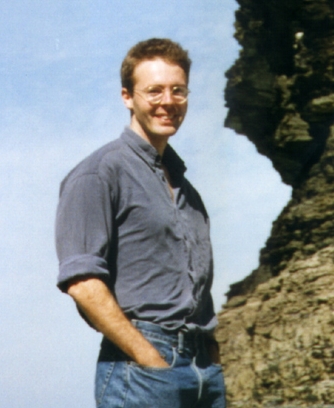Lecture notes
There is a fairly substantial set of lecture notes on physics here,
including electromagnetism, quantum physics, thermal physics, atomic physics, relativity.
Oxford Physics
Here is the link back to my personal page at Oxford Physics.
The physics website is a good place to find publications lists, research group information,
and things like that. Here I provide information which is mostly teaching-related or for
convenience in other respects.
Research
My research interests are concentrated around fundamental questions in
physics, especially the nature of quantum mechanics. I have followed
these interests by developing high-precision experiments in which quantum
systems such as atoms are under precise and coherent experimental control,
and by theoretical work including the control of atomic motion by laser
light, and bringing together classical information theory and quantum
mechanics. The latter led in particular to the discovery of quantum
error correction.
Research papers
Books
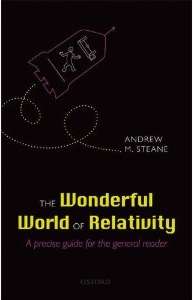
|
The Wonderful World of Relativity---A precise guide for the general reader
by Andrew M. Steane (Oxford University Press, 2011).
This book provides a lively and visual introduction to Einstein's theory of
relativity. It is for a readership including young people at school (post-16)
and the general public with an interest in modern science. It uses many
diagrams and simple equations, guiding the
reader carefully through them, in order to display the beautiful insights which
the theory provides. Paradoxes and puzzles are introduced and resolved, and used
to show how the ideas force us to understand time in a new way. The book
culminates in a thorough unfolding of the relation between mass and energy.
|
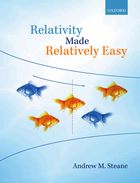
|
Relativity made Relatively Easy
by Andrew M. Steane (Oxford University Press, 2012).
This presents an extensive study of Special Relativity and a gentle (but exact) introduction
to General Relativity for undergraduate students of physics. Assuming almost no prior
knowledge, it presents all the Relativity needed for a final year undergraduate university
course, including some underpinning of other areas such as electromagneism. The aim is to make derivations as simple as possible and physical ideas as
transparent as possible. Lorentz invariants and four-vectors are introduced early on, but
tensor notation is postponed until needed. In addition to the more basic ideas such as
Doppler effect and collisions, the text introduces more advanced material such as
radiation from accelerating charges, Lagrangian methods, the stress-energy tensor,
and introductory General Relativity, including Gaussian curvature, the Schwarzschild
solution, gravitational lensing, and black holes.
|
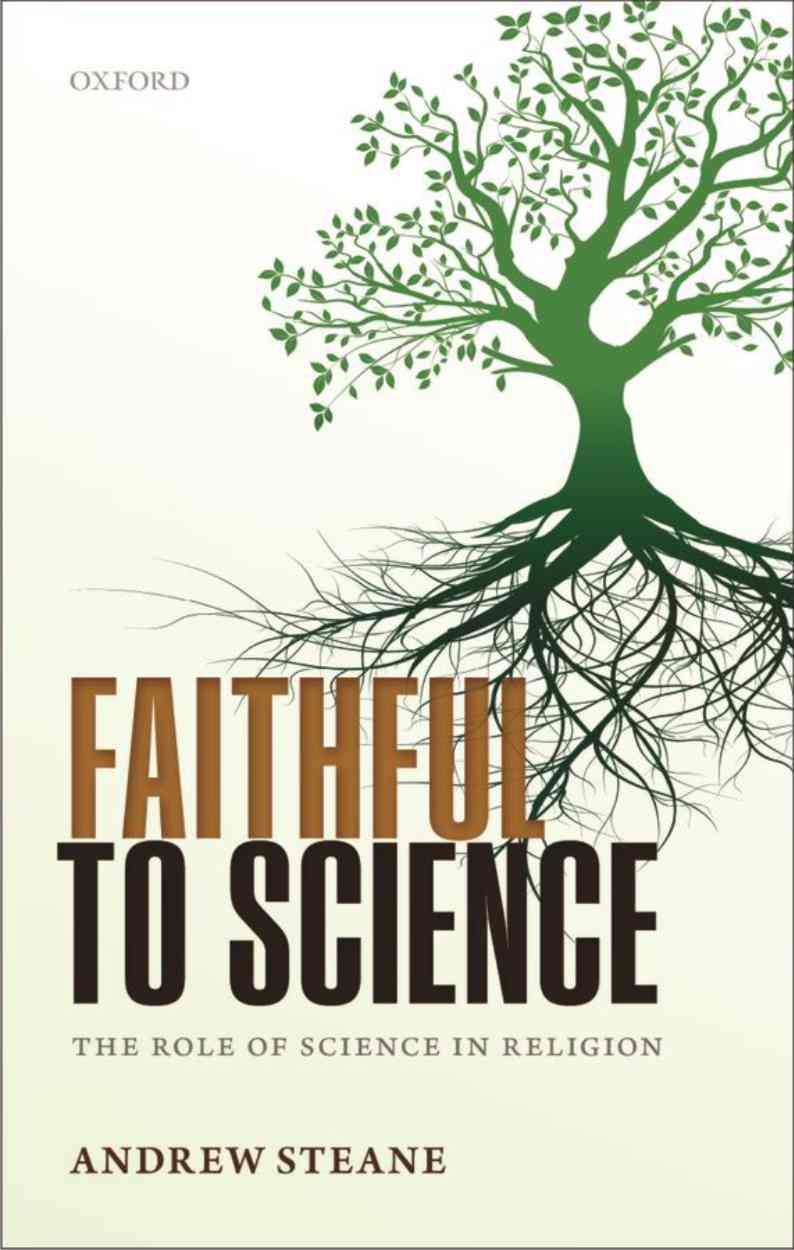
|
Faithful to Science - the role of science in religion
by Andrew M. Steane (Oxford University Press, 2014).
This presents the role of science in a theistic outlook on the world. It is told from the
point of view of a reasonably broad engagement with theism, and aims to show what
science is and is not, and how it takes its place in a wider framework. It is
hoped that the book will promote a better public understanding of science, and
also an understanding of human life that recognizes the integrity of high-level
concepts such as love and forgiveness, no matter what may be the reader's religious
commitments. Some further web-based comment from me in this area can be found at the
Seen & Unseen website here.
|
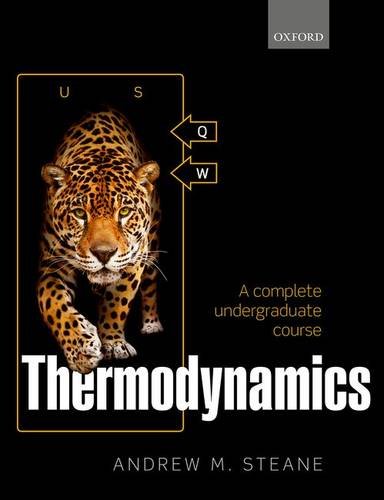
|
Thermodynamics: a complete undergraduate course
by Andrew M. Steane (Oxford University Press, 2016).
This is an undergraduate textbook, designed for self-study. It starts at first year level,
with explanation of basic concepts such as entropy, systems and states.
It develops the basic proofs that are associated with the laws of thermodynamics, and
then introduces further functions such as free energy, and associated methods. There are
many examples and much care has been devoted to getting the logic as clear as possible.
The book takes the reader to the end of an undergraduate course, and a little beyond in some areas.
|
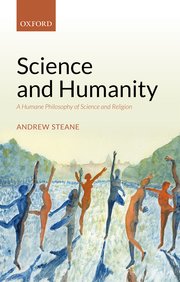
|
Science and Humanity: a humane philosophy of science and religion
by Andrew Steane (Oxford University Press, 2018).
The main aim of this book is to reconfigure the public understanding of science. It is mostly about
the structure of scientific explanation, and indeed the very notion of explanation, and how this fits with
notions of value and meaning which science does not address.
No area of science, whether particle physics or Darwinian evolution or brain chemistry or whatever,
can in the least diminish or replace the discourse of human affairs that is undertaken in the subjects
we call humanities, such as law, language, history and philosophy. I also want to expose the illogic of confusing
physical causes with purposes, and to show that the natural world in general, and Darwinian evolution in
particular, is not altogether unguided, because it can only explore the space of what is possible, and
this is a highly structured space. Finally, I give an introduction to how theological language works
when it is used carefully, and provide an answer to Hume and Dawkins.
Some further web-based comment from me in this area can be found at the
Seen & Unseen website here.
|
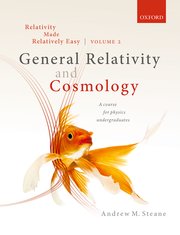
|
General Relativity and Cosmology
(Relativity made relatively easy, volume 2)
by Andrew Steane (Oxford University Press, 2021).
This completes my attempt to make relativity accessible to undergraduates. It is the follow-up to "Relativity made
relatively easy" mentioned above. This is a more advanced book than the first one, but it is intended still
to be accessible to undergraduate physics students. They would normally be in the third or fourth year of a first degree
course. It can also act as a starting point for graduate study. The book first treats the linear approximation to general
relativity, including precession effects and gravitational wave production and detection. Then it turns to
differential geometry at a level sufficient for astronomy and cosmology. The curvature tensor and the Einstein field equation
are then treated, and applied exactly to various standard cases, such as stars and black holes. Many
standard problems are worked out in full. The text then turns to cosmology, and this part acts as a
complete self-contained introduction to that subject. Finally there is an introduction to some other themes
in classical field theory, especially spinors, the Dirac equation, and the way G.R. can itself be deduced
from a Lagrangian approach.
Just before publication I noticed the following error (apologies!): eqn (14.8) is missing a term. It should read
∇μ∇μ Aa - Raμ Aμ
= -μ0 ja
For a complete list of errata spotted so far, please see the link below.
|
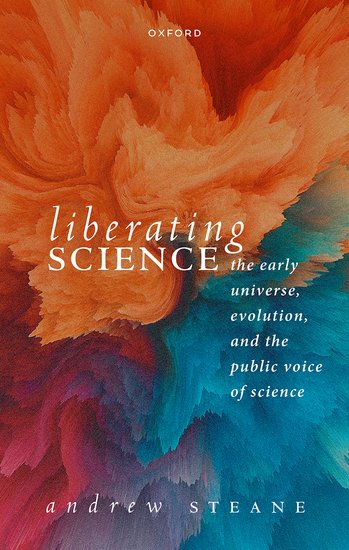
|
Liberating Science
The Early Universe, Evolution, and the Public Voice of Science
by Andrew Steane (Oxford University Press, 2023).
A display of science for the general reader, and also a cultural critique. Liberating
Science ventures carefully and eloquently into two main areas—the early universe
and biological evolution. The aim is to correct widely-held misconceptions and
appreciate what is really going on. The result is a fresh look at where we come
from. Fortunately, it is a more liberating picture than the depressingly amoral
one widely disseminated in the name of science. And science itself needs to be
liberated: freed from a modern attempt to claim it into private ownership in
cultural terms. We can and should reclaim our common land, not allow it to
become ‘Brightland’.
‘... can be read with profit by an intelligent sixth-former, the interested general reader
and by specialists, all of whom will find much here that is insightful and
thought-provoking.’
Professor Michael J. Reiss,
Professor of Science Education, University College London
‘... clear, logically rigorous and highly accessible.
A book that needs to be, and surely will be, widely read.’
Dr Iain McGilchrist
Quondam Fellow of All Souls College, Oxford, author, The Master and His Emissary
‘Insightful, upbuilding, and potentially transformative.’
Prof Hans Halvorson
Stuart Professor of Philosophy, Princeton University
|
Errors in my books
Click here for a pdf document listing errata of which I am aware.
Teaching
Software
Graph theory, Shannon game and Hex
|
